NITROFURANTOIN/NITROFURANTOIN MACROCRYSTALS - ORAL
PHONETIC PRONUNCIATION: (NYE-trow-fyour-AN-toe-in)
COMMON BRAND NAME(S): Macrobid
GENERIC NAME(S): nitrofurantoin monohydrate/macrocrystals
Uses
USES: This medication is an antibiotic used to treat bladder infections (acute cystitis). It works by stopping the growth of bacteria. This antibiotic treats only bacterial infections. It will not work for viral infections (such as common cold, flu). Using any antibiotic when it is not needed can cause it to not work for future infections. This medication should not be used in infants younger than 1 month old (see also Precautions section). This drug should not be used to treat infections outside the bladder (e.g., kidney infections such as pyelonephritis or perinephric abscesses).
How to use NITROFURANTOIN/NITROFURANTOIN MACROCRYSTALS - ORAL
HOW TO USE: Take this medication by mouth with food as directed by your doctor, usually twice daily (every 12 hours). Swallow the medication whole for best results. Do not use magnesium trisilicate-containing antacids while taking this medication. These antacids can bind with nitrofurantoin, preventing its full absorption into your system. For the best effect, take this antibiotic at evenly spaced times. To help you remember, take this medication at the same time(s) every day. Continue to take this medication until the full prescribed amount is finished, even if symptoms disappear after a few days. Stopping the medication too early may allow bacteria to continue to grow, which may result in a return of the infection. Inform your doctor if your condition persists or worsens.
Side Effects
Precautions
Interactions
Overdose
Images
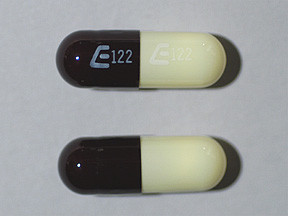
- color
- ivory
- shape
- oblong
- imprint
- E122, E122

- color
- ivory
- shape
- oblong
- imprint
- E122, E122
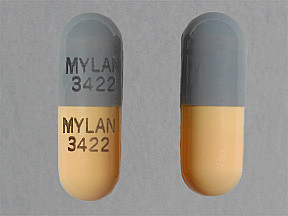
- color
- light gray
- shape
- oblong
- imprint
- MYLAN 3422, MYLAN 3422
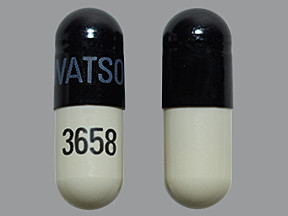
- color
- shape
- oblong
- imprint
- WATSON, 3658

- color
- ivory
- shape
- oblong
- imprint
- E122, E122
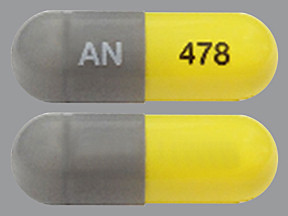
- color
- yellow
- shape
- oblong
- imprint
- AN, 478
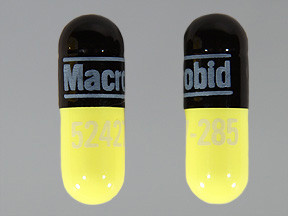
- color
- yellow
- shape
- oblong
- imprint
- Macrobid, 52427-285

- color
- light gray
- shape
- oblong
- imprint
- MYLAN 3422, MYLAN 3422

- color
- light gray
- shape
- oblong
- imprint
- MYLAN 3422, MYLAN 3422
Reviews
Disclaimer
IMPORTANT: HOW TO USE THIS INFORMATION: This is a summary and does NOT have all possible information about this product. This information does not assure that this product is safe, effective, or appropriate for you. This information is not individual medical advice and does not substitute for the advice of your health care professional. Always ask your health care professional for complete information about this product and your specific health needs.
No Reviews Yet